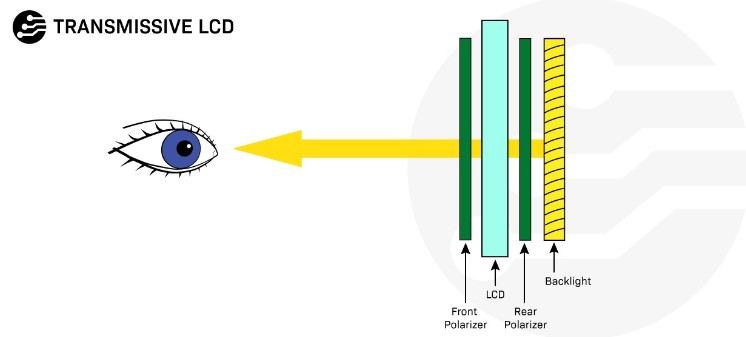Transmissive LCD Display
Blaze Display Technology Co., Ltd. | Updated: Nov 27, 2018
Liquid Crystal Displays (LCDs) are widely used in electronic devices for all kinds of industries. They are typically divided into three display types based on their light transmission modes. The three main types of LCD modes are transmissive, reflective, and transflective. The main difference is how they use light to illuminate the pixels in the display:
l Transmissive LCDs require a backlight for clear visibility.
l Reflective LCDs do not have a backlight and rely on external light sources.
l Transflective LCDs combine both transmissive and reflective properties.
How do transmissive displays work?
Transmissive displays work by transmitting light through the surface of the display. This is achieved by using a series of layers, including a layer of liquid crystal that can be manipulated to control the amount of light passing through, a backlight to provide the light source and an outer layer of protective glass or plastic. When an electrical current is applied to a pixel in the display, it allows more or less light to pass through, creating an image.

Transmissive LCD uses
The most common devices using transmissive LCDs are smartphones, tablets, computer monitors, and televisions. They are also used in digital cameras, camcorders, automotive displays, navigation systems, in-flight entertainment systems, medical equipment, kiosks, and point-of-sale (POS) terminals.
You can also find transmissive display modes in graphic LCDs, and character LCDs with negative display types creating bright light pixels on blue or dark backgrounds.
Advantages of transmissive LCDs
l High image quality: Transmissive LCDs can produce high-quality, bright, vivid images with a wide color gamut and high contrast ratio.
l Good visibility in low-light environments: Transmissive LCDs rely on a backlight to be visible, which makes them suitable for darker lighting conditions.
l Wide viewing angles: Transmissive LCDs have wide viewing angles, making viewing the display from various positions easy.
l Suitable for high-resolution: Transmissive LCDs can handle high-resolution images and videos.
Disadvantages of transmissive LCDs
l High power consumption: Transmissive LCDs require a backlight to be visible, which increases power consumption and reduces the end product's battery life.
l Reduced visibility in bright sunlight: Transmissive LCDs are not well-suited for use in direct sunlight, as the backlight can wash out the display.
l Susceptible to glare: Transmissive LCDs can be affected by glare, making it difficult to view the display in certain lighting conditions.

